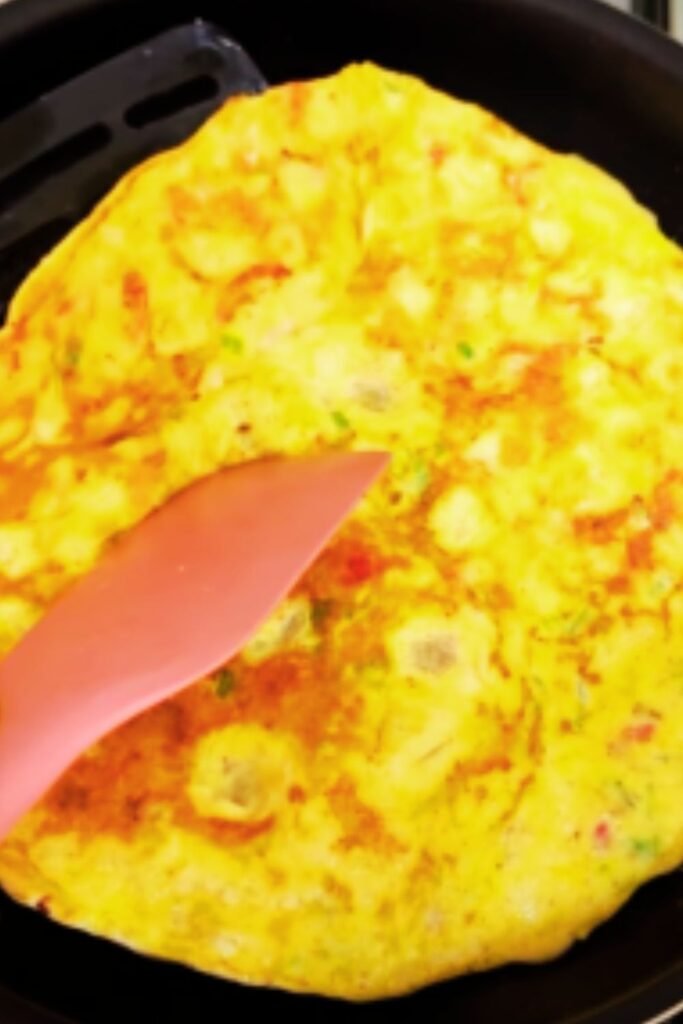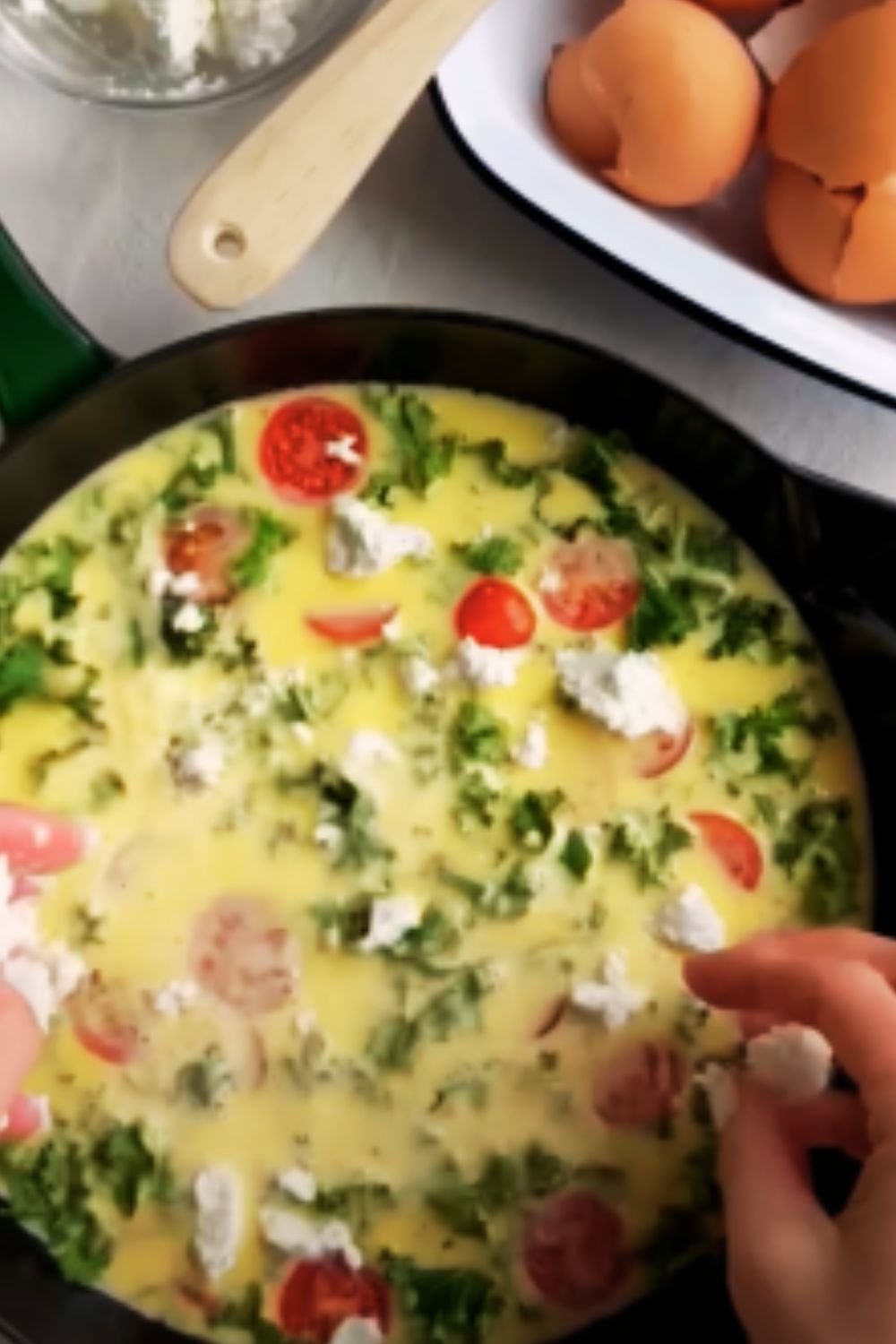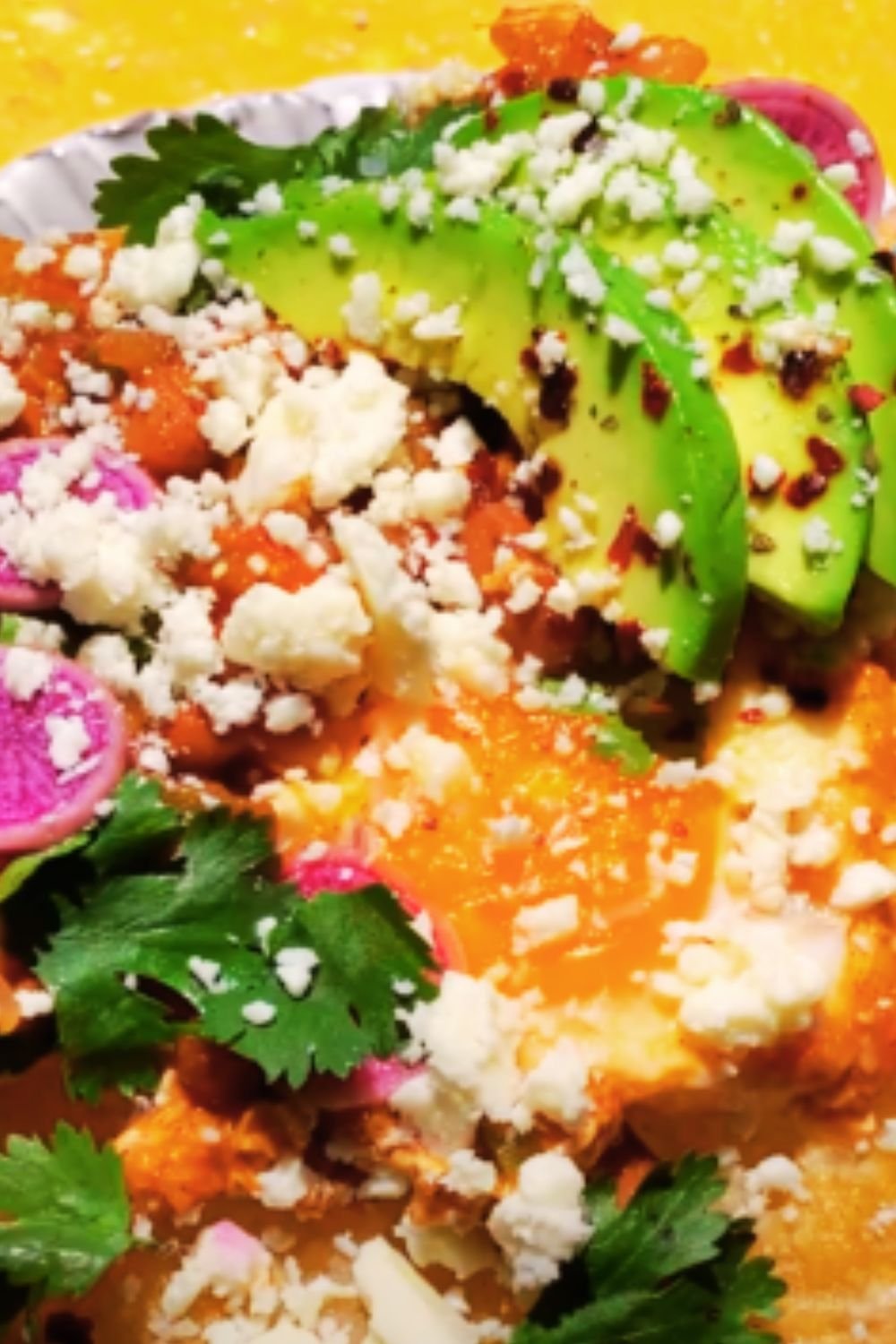When I first encountered Spanish beans and eggs during my culinary adventures through Andalusia, I was struck by how something so seemingly simple could deliver such profound satisfaction. This rustic dish, known locally as “Huevos con Judías” or “Judías con Huevos,” represents the very essence of Spanish home cooking – humble ingredients transformed into something extraordinary through technique, patience, and love.
The beauty of Spanish beans and eggs lies not just in its incredible flavor profile, but in its remarkable versatility as a one-pan wonder. Whether you’re seeking a hearty breakfast to fuel your morning, a satisfying lunch that won’t weigh you down, or a comforting dinner that brings the family together, this dish delivers on all fronts. I’ve prepared this meal countless times in my own kitchen, and each iteration teaches me something new about the delicate balance between the creamy richness of perfectly cooked eggs and the earthy, robust character of well-seasoned beans.
Understanding the Spanish Culinary Heritage
Tapas Culture: Traditional small plates designed for sharing and socializing, often featuring simple ingredients elevated through skillful preparation.
Sofrito: The aromatic base of sautéed onions, garlic, and tomatoes that forms the foundation of countless Spanish dishes.
Pimentón: Spanish smoked paprika that adds depth and complexity without overwhelming heat.
Olive Oil Philosophy: In Spanish cooking, olive oil isn’t just a cooking medium – it’s a flavor component that should be of the highest quality you can afford.
The origins of this dish trace back to the working-class neighborhoods of southern Spain, where resourceful cooks needed to create filling, nutritious meals from pantry staples. What emerged was a perfect marriage of protein and legumes, seasoned with the holy trinity of Spanish cooking: garlic, olive oil, and pimentón.
Essential Ingredients Breakdown
Primary Components
| Ingredient | Quantity | Quality Notes | Substitutions |
|---|---|---|---|
| Cannellini Beans | 2 cups cooked | Use dried beans soaked overnight for best texture | Navy beans, Great Northern beans |
| Large Eggs | 6-8 eggs | Free-range preferred for richer yolks | Duck eggs for luxury version |
| Spanish Olive Oil | 1/4 cup | Extra virgin, fruity variety | High-quality Italian olive oil |
| Yellow Onion | 1 large | Sweet varieties work best | Shallots, white onion |
| Garlic Cloves | 4-5 cloves | Fresh only, never powdered | Garlic scapes in season |
| Ripe Tomatoes | 2 medium | San Marzano or equivalent | High-quality canned crushed tomatoes |
Seasoning Arsenal
| Spice/Herb | Amount | Purpose | Storage Tips |
|---|---|---|---|
| Pimentón Dulce | 2 teaspoons | Smoky sweetness | Airtight container, away from light |
| Bay Leaves | 2 leaves | Aromatic depth | Whole leaves, remove before serving |
| Fresh Thyme | 1 tablespoon | Herbal brightness | Strip from stems just before use |
| Sea Salt | To taste | Flavor enhancement | Flaky finishing salt for texture |
| Black Pepper | 1/2 teaspoon | Gentle heat | Freshly cracked preferred |
| Sherry Vinegar | 1 tablespoon | Acidic balance | Aged varieties add complexity |

The Art of Bean Preparation
My approach to beans has evolved significantly over the years. While canned beans offer convenience, I strongly advocate for cooking dried beans when time permits. The texture difference is remarkable – dried beans maintain their integrity better and absorb flavors more effectively.
For dried beans, I start by soaking two cups of cannellini beans in cold water for at least eight hours. The next morning, I drain and rinse them thoroughly before placing them in a heavy-bottomed pot with fresh water, a bay leaf, and a generous glug of olive oil. The key is gentle simmering – never a rolling boil, which can cause the skins to burst and create a mushy texture.
The cooking process takes approximately 45 minutes to an hour, depending on the age of your beans. I test for doneness by pressing a bean between my fingers; it should yield easily but still hold its shape. Once cooked, I reserve about a cup of the cooking liquid – this starchy, flavorful water becomes an essential component of our final dish.
Mastering the Sofrito Foundation
The sofrito serves as the flavor backbone of our Spanish beans and eggs. In my experience, rushing this step invariably leads to disappointing results. I begin by heating my olive oil in a large, well-seasoned cast iron skillet over medium-low heat. The oil should shimmer but never smoke.
I add the diced onion first, allowing it to cook slowly until it becomes translucent and develops a slight golden color. This process typically takes eight to ten minutes – patience here pays dividends in the final dish. The onion should never brown aggressively; we’re seeking a gentle caramelization that brings out natural sweetness.
Next comes the minced garlic, which I add to the pan and cook just until fragrant – no more than thirty seconds. Garlic burns quickly and becomes bitter, so timing is crucial. I follow immediately with the grated tomato, which I prepare by cutting fresh tomatoes in half and grating them on the large holes of a box grater, discarding the skin.
The tomato mixture simmers until most of the liquid evaporates and the mixture becomes paste-like in consistency. This concentration process intensifies the tomato flavor and creates the proper texture for our sofrito base.
Building Layers of Flavor

With our sofrito prepared, I add the pimentón dulce, stirring constantly for about thirty seconds to toast the spice and release its aromatic compounds. This step is critical – the paprika should become fragrant but never burn, which would introduce unpleasant bitter notes.
I then add the cooked beans along with approximately half a cup of their cooking liquid. If using canned beans, I substitute low-sodium vegetable broth for the cooking liquid. The mixture should have a slightly soupy consistency at this stage – not too dry, but not swimming in liquid either.
The beans simmer gently for ten to fifteen minutes, allowing them to absorb the sofrito flavors while maintaining their structural integrity. I taste and adjust seasoning at this point, adding salt carefully since the beans will continue to concentrate as they cook.
The Egg Integration Technique
The moment of adding eggs to the bean mixture requires finesse and attention. I create small wells in the bean mixture using the back of a spoon, spacing them evenly around the pan. Each well should be deep enough to cradle an egg without it spreading too much across the surface.
I crack each egg into a small bowl first – this allows me to inspect for broken yolks and gives me better control during the addition process. The eggs go into the wells one by one, and I immediately reduce the heat to low to prevent the whites from cooking too rapidly.
Here’s where personal preference plays a significant role. I prefer my yolks slightly runny, which means cooking for approximately eight to ten minutes with the pan uncovered. For those who prefer fully set yolks, covering the pan for the final few minutes creates a gentle steam environment that cooks the tops without browning the bottoms.
Nutritional Profile Analysis
| Nutrient | Per Serving | Daily Value % | Health Benefits |
|---|---|---|---|
| Protein | 22g | 44% | Complete amino acid profile |
| Fiber | 12g | 48% | Digestive health, satiety |
| Iron | 4.2mg | 23% | Oxygen transport, energy |
| Folate | 180mcg | 45% | Cell division, DNA synthesis |
| Potassium | 680mg | 19% | Heart health, blood pressure |
| Vitamin D | 82 IU | 21% | Bone health, immune function |
| Healthy Fats | 18g | – | Heart health, nutrient absorption |
The nutritional density of this dish impresses me every time I analyze it. The combination of legumes and eggs creates a complete protein profile, while the generous use of olive oil provides heart-healthy monounsaturated fats. The fiber content promotes satiety and digestive health, making this an ideal meal for sustained energy.
Seasonal Variations and Adaptations
Spring brings opportunities to incorporate fresh peas and asparagus into the mix. I blanch these vegetables briefly before adding them to the bean mixture, preserving their vibrant color and crisp texture. Fresh herbs like parsley and chives make excellent finishing touches during this season.
Summer variations might include diced bell peppers added with the onions, or fresh corn kernels stirred in during the final minutes of cooking. Cherry tomatoes, halved and added just before the eggs, provide bursts of sweetness and acidity.
Autumn calls for heartier additions – diced butternut squash, roasted and stirred in with the beans, or sautéed mushrooms for earthy depth. I sometimes add a pinch of smoked paprika (pimentón picante) for warmth during cooler months.
Winter versions benefit from preserved elements like sun-dried tomatoes or roasted red peppers from jars. A handful of wilted spinach or kale adds color and nutrients when fresh vegetables are less abundant.
Equipment Considerations and Techniques

My weapon of choice for this dish is a well-seasoned 12-inch cast iron skillet. The superior heat retention and even cooking surface make it ideal for achieving the perfect texture on both beans and eggs. However, a heavy-bottomed stainless steel pan or enameled cast iron works admirably as well.
The key is using cookware that can transition seamlessly from stovetop to oven if needed. Sometimes I finish the dish under the broiler for thirty seconds to achieve lightly golden egg whites while keeping the yolks creamy.
Temperature control throughout the cooking process cannot be overstated in importance. Most of the cooking happens over medium to medium-low heat, with only the initial oil heating requiring higher temperatures. A kitchen thermometer can be helpful initially, but developing an intuitive sense of proper heat levels comes with practice.
Serving Suggestions and Accompaniments
Traditional Pairings
| Accompaniment | Preparation | Cultural Significance |
|---|---|---|
| Crusty Bread | Grilled or toasted | Essential for soaking up flavors |
| Marcona Almonds | Lightly salted | Textural contrast, healthy fats |
| Membrillo | Quince paste | Sweet-savory balance |
| Manchego Cheese | Room temperature | Creamy richness, umami depth |
| Olives | Mixed varieties | Briny acidity, authentic touch |
The bread component deserves special attention. I prefer a rustic sourdough or country-style loaf, sliced thick and either grilled or toasted until golden. The bread serves multiple purposes – it provides textural contrast, helps absorb the delicious sauce, and transforms the dish into a more substantial meal.
For lighter accompaniments, a simple salad of mixed greens dressed with sherry vinegar and olive oil cleanses the palate between bites. Roasted peppers, either prepared fresh or from a jar, add sweetness and visual appeal to the plate.
Storage and Reheating Guidelines
Leftover Spanish beans and eggs store well in the refrigerator for up to three days, though the texture of the eggs changes significantly upon reheating. I recommend storing the bean mixture separately from any leftover eggs when possible.
For reheating, I prefer using a low oven (300°F) rather than the stovetop to ensure even warming without overcooking. If the bean mixture seems dry after storage, a splash of broth or water helps restore the proper consistency.
The bean component actually improves in flavor after a day in the refrigerator, as the spices and aromatics have additional time to meld. This makes it an excellent make-ahead component for busy weeknight dinners.
Troubleshooting Common Issues
Texture Problems and Solutions
| Issue | Cause | Prevention | Fix |
|---|---|---|---|
| Mushy Beans | Overcooking, old beans | Test frequently, buy fresh | Use in purees or soups |
| Rubbery Eggs | High heat, overcooking | Low temperature, timing | Cannot be fixed |
| Watery Consistency | Too much liquid | Measure carefully | Simmer uncovered to reduce |
| Bland Flavor | Under-seasoning | Taste frequently | Add salt, acid, herbs |
| Burnt Sofrito | High heat | Medium-low heat | Start over |
The most common mistake I observe in students’ attempts at this dish involves rushing the sofrito development. The foundation flavors require time to develop properly, and attempting to speed the process with higher heat invariably results in burnt or bitter notes that cannot be corrected.
Egg cookery presents its own challenges. The key lies in creating an environment where the whites set gently while the yolks remain creamy. This requires patience and proper heat management – skills that develop with practice.
Advanced Techniques and Variations
For those seeking to elevate this rustic dish, consider incorporating chorizo or pancetta during the sofrito stage. I cook diced cured pork until the fat renders, then proceed with the onion addition, using the rendered fat as part of my cooking medium.
Seafood variations work beautifully in coastal regions of Spain. I sometimes add clams or mussels to the bean mixture, allowing them to steam open in the aromatic base. The briny seafood liquor adds tremendous depth to the overall flavor profile.
Vegetarian protein alternatives include diced firm tofu or tempeh, added with the beans to absorb flavors. Nutritional yeast stirred in at the end provides umami depth without animal products.
Q&A Section
Q: Can I make this dish ahead of time for meal prep?
I recommend preparing the bean component up to three days in advance and storing it refrigerated. When ready to serve, reheat the beans gently and add fresh eggs to complete the dish. The eggs don’t hold well once cooked, so they’re best prepared fresh each time.
Q: What’s the best way to achieve runny yolks consistently?
Temperature control is crucial here. Keep your heat at medium-low once the eggs are added, and start checking for doneness after about 6 minutes. The whites should be set but the yolks should still jiggle slightly when you gently shake the pan.
Q: Can I use different types of beans for this recipe?
Absolutely! While cannellini beans are traditional, navy beans, great northern beans, or even chickpeas work wonderfully. Each brings its own texture and flavor profile to the dish. Just adjust cooking times accordingly, as different beans have varying cooking requirements.
Q: How do I prevent the garlic from burning in the sofrito?
Add garlic after the onions have had time to soften and cook it for no more than 30 seconds before adding the tomatoes. The key is having your next ingredient (tomatoes) ready to go immediately after the garlic becomes fragrant.
Q: Is there a dairy-free version of this dish?
This recipe is naturally dairy-free! The richness comes from olive oil and eggs rather than any dairy products. It’s also naturally gluten-free if you skip the bread accompaniment or use gluten-free bread.
Q: What should I do if my bean mixture is too thick?
Add small amounts of the reserved bean cooking liquid (or vegetable broth if using canned beans) until you achieve the desired consistency. The mixture should be saucy but not soupy – think of a thick stew consistency.
Q: Can I make this in a regular non-stick pan?
While cast iron is preferred for heat retention and oven-safe properties, a large non-stick pan works fine. Just ensure it’s big enough to hold all ingredients comfortably and can accommodate the eggs without overcrowding.
Q: How do I know when the eggs are perfectly cooked?
For runny yolks, the whites should be completely set and opaque white, while the yolks should still jiggle slightly when you gently shake the pan. This typically takes 8-10 minutes over low heat. For firmer yolks, cook an additional 2-3 minutes or cover the pan briefly.
This Spanish beans and eggs dish represents everything I love about Mediterranean cooking – simple ingredients treated with respect, traditional techniques that have stood the test of time, and flavors that bring people together around the table. Each time I prepare it, I’m reminded of why some recipes become classics, transcending generations and borders to find their way into kitchens around the world.



